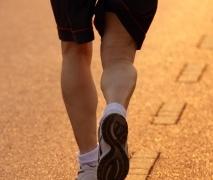[dropcap style=”font-size:100px; color:#992211;”]L[/dropcap]iving between 2000 and 2500 metres up is the optimum range to reap the performance benefits of altitude training.
Also means you can join the mile high club from the comfort of your own boudoir.
Just sayin’.
Live High – Train Low
Researchers and athletes have long known that living at altitude holds the potential to improve athletic performance. Many competitive endurance athletes follow a “Live High – Train Low” training regimen, in which they live at moderate altitudes and do their easiest workouts there, saving their most intense training for altitudes closer to sea level. However, though several studies have shown the promise of this type of training philosophy, it’s been unknown what specific living altitude is best for enhancing athletic performance at sea level.
To help answer this question, lead researchers Benjamin D. Levine of the Institute for Exercise and Environmental Medicine at Texas Health Resources and the UT Southwestern Medical Center and James Stray-Gundersen of the USA Ski and Snowboard Association, along with first author Robert F. Chapman of Indiana University and colleagues flew competitive collegiate runners from Dallas, Texas—a city near sea level—to one of four different altitude training camps at various heights in the mountains near Salt Lake City, Utah, where they lived and trained for a month.
Prior to and after the altitude training camp, they tested these athletes’ performance in a 3000 meter time trial in Dallas. The researchers’ findings show that living between 2000 and 2500 meters above sea level offered the best performance enhancement compared to living at higher or lower elevations. These findings could help competitive endurance athletes and their coaches develop altitude training regimens that have the highest chance of success.
The article is entitled “Defining the ‘Dose’ of Altitude Training: How High to Live for Optimal Sea Level Performance Enhancement.” It appears in the Articles in Press section of the Journal of Applied Physiology, published by the American Physiological Society.
Methodology
The researchers worked with 48 collegiate track and cross country runners. For four weeks, these athletes trained in Dallas, where the researchers performed a variety of tests to assess the athletes’ baselines on several different measures. For example, they determined the athletes’ VO2max, a measure of aerobic fitness based on the rate at which the body uses oxygen during exercise. They timed the athletes as they ran 3000 meters at their fastest pace. They performed a variety of blood tests, including measuring their volume of red blood cells and the concentration of a hormone called EPO that stimulates red blood cell production. Previous research has shown that EPO concentrations rise when people live at higher altitudes, an adaptation to help their bodies cope with less oxygen in the air by making more red blood cells.
Then, for a second four weeks, these athletes were separated into four groups. Each group lived in altitude training camps in the mountains near Salt Lake City at sites of various altitudes: Heber City (1780 meters), Park City (2085 meters), Deer Valley (2454 meters), and Guardsman’s Pass (2800 meters). Once a day, all the athletes gathered at a common site to train regardless of which altitude they were assigned for living. Their EPO concentrations were checked periodically during their mountain stay.
At the end of this period, the athletes regrouped in Dallas, where they had more exercise and blood testing and ran another timed 3000 meters.
Results
The researchers found that when the athletes returned to sea level, only those who lived at the two middle altitudes (2085m and 2454m) performed significantly better than those at either end of the spectrum. EPO concentrations and red blood cell volumes had risen in each of the four groups, suggesting that contrary to long-held wisdom, these adaptations aren’t the only reason altitude training enhances performance.
Importance of the Findings
These findings suggest that there’s a defined window for altitude living—between 2000 and 2500 meters—that can improve sea level performance in competitive runners.
“These data suggest that when completing an altitude training camp, there is an optimal living altitude for producing improvement sin sea level performance,” they write. “For the athlete engaged in altitude training, the identification of an optimal living altitude holds tremendous practical application.”
Source: American Physiological Society

Some of the news that we find inspiring, diverting, wrong or so very right.





















